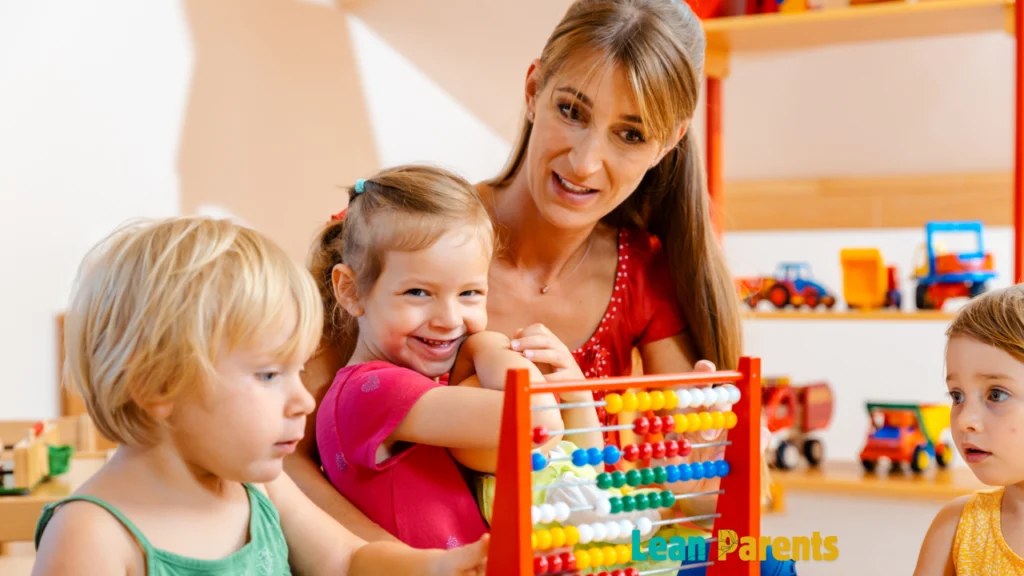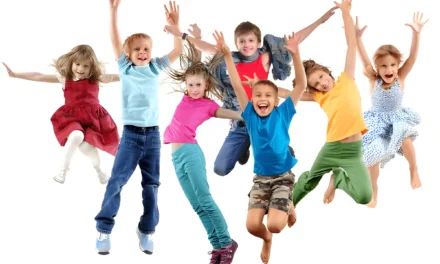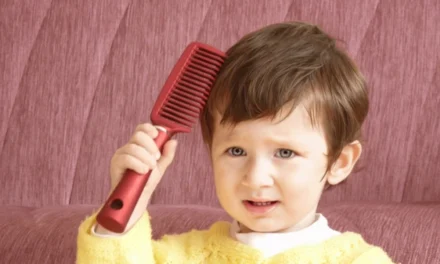Recognizing Signs of Healthy Emotional Development: A Parent’s Guide – Did you know Serene Health is the top behavioral and mental health service in San Diego, Los Angeles, Phoenix, and more? As parents, we’re key in helping our kids grow emotionally and mentally. This guide will help you support your child’s emotional growth from babyhood to teen years.
Healthy emotional growth is vital for a child’s happiness, strength, and success. Knowing the important milestones and spotting any issues early helps us support our kids. This way, they can handle life’s emotional ups and downs.
Key Takeaways
- Discover the critical stages of emotional development from birth to adolescence1
- Learn effective strategies to create a nurturing home environment that fosters emotional growth1
- Recognize the warning signs of potential mental health concerns in children and seek professional help when needed1
- Empower your child to navigate life’s challenges with resilience and strength through mental health support1
- Explore personalized mental health services from Serene Health to address your child’s unique needs1
Understanding the Foundations of Emotional Development
Emotional development is key for a child’s growth, tied to brain development and early life experiences2. It affects success in school, at home, and in society2. Knowing these basics helps parents support their kids at every stage.
Key Components of Emotional Growth
Trust, security, and consistent care are vital for emotional growth2. Creating a safe space and teaching kids to express their feelings are important2. Positive feedback is crucial for kids aged three to five2.
The Role of Brain Development
The brain grows fast in early childhood, impacting emotional development2. Skills like managing emotions and making decisions develop early3. These skills build the foundation for later abilities3.
Impact of Early Experiences
Early life experiences shape a child’s emotional base2. Caregiver relationships are key for emotional and social skills3. Supportive relationships help kids stay healthy and develop well3.
| Key Findings | Impact |
|---|---|
| Strong emotional development leads to five key skills: self-awareness, social-awareness, emotional regulation, responsible decision making, and relationship building2. | Emotional development plays a crucial role in all aspects of child development, especially during the early years before the age of five2. |
| Tantrums are a normal part of emotional development in children, typically occurring between the ages of two to three2. | Preschool caregivers play a vital role in helping children in managing emotions by providing strategies and guidance2. Modeling coping strategies and practicing them together with children can significantly impact their emotional development2. |
| Research during the pandemic indicated that increased parental stress, household chaos, and conflict translated into challenging behaviors and fewer adaptive behaviors in children3. | The well-being of caregivers is critical for providing responsive care for children’s social and emotional development3. |
Understanding emotional development helps parents support their children’s growth2. Emotional foundations, brain development, and early experiences are all important for a child’s emotional journey.
Supporting social and emotional skills means nurturing relationships at home and in early learning settings3. Community and family support also play a big role3.
Developmental Milestones from Birth to Age Two
From birth to age two, children grow a lot emotionally and socially. They learn to trust and feel safe because of loving care4. They start showing basic emotions like anger, joy, and fear right at birth4. They smile socially for the first time between 1-2 months4.
By 4 months, they can recognize their main caregivers4. As they get older, they start to play with things and feel close to caregivers4. Around 8 months, they learn to share attention with others4.
By 15 months, they show empathy and feelings about themselves4. At 18 months, they like to share things with their caregivers4.
Between 18 to 30 months, toddlers want to be on their own and show their feelings4. Parents are key in making a safe place for them to grow emotionally4.
| Emotional Milestone | Age Range |
|---|---|
| Universal facial expressions for anger, joy, and fear | Birth |
| Social smiling | 1-2 months |
| Recognition of primary caregivers | 4 months |
| Effective attachment relationships and joint attention skills | 6-12 months |
| Empathy and self-conscious emotions | 15 months |
| Bringing objects to show or give to caregiver | 18 months |
| Autonomy and individuation | 18-30 months |
Growth charts help track a child’s physical growth, but they’re not everything5. Growth patterns can vary a lot, especially in early years and puberty5. Parents should focus on creating a caring environment and watch for any sudden changes in their child’s growth5.
The Preschool Years: Emotional Growth Markers

Children from ages 2 to 5 experience a big leap in emotional growth. They become more independent and learn to express their feelings better6.
Social Interaction Patterns
Preschoolers learn to play well with others. They start to understand sharing and taking turns6. Outdoor play helps them grow their social skills6.
Expression of Feelings
By 4, kids know hundreds of words and can make simple sentences6. By 5, they can use even more words in longer sentences6. This helps them share their feelings clearly.
Self-Regulation Development
Preschoolers are getting better at controlling their emotions. But, they still need a lot of help from adults6.
Knowing how preschoolers grow emotionally helps parents and teachers. They can support kids’ social, emotional, and thinking skills7.
Building Trust and Security in Early Childhood
Creating a strong base of child trust, emotional security, and parental bond is key for young kids’ emotional growth. When parents are always there and respond quickly, kids feel safe and loved8.
A stable home with regular routines makes kids feel secure. Being close to caregivers helps kids build strong relationships and emotional strength. Parents should always be there and listen well to build trust8.
- Installation of safety gates on staircases
- Childproofing by securing sharp objects
- Covering electrical outlets
Talking openly and listening to kids’ feelings is also vital for a caring home8.
- Morning circle time for group discussions
- Designated periods for free play and structured activities
- Regular meal and snack times
Warm greetings, listening, and meeting kids’ needs build trust with caregivers8. Studies show kids with caring providers have better emotional control, self-esteem, and social skills9.
Building trust early on leads to healthier emotions and better mental health later in life8. Strong family support is key for a child’s well-being and growth in early years9.
| Physical Safety Measures | Emotional Safety Measures |
|---|---|
|
|
Setting up routines, daily rituals, and encouraging feelings are key for trust and security in young kids8. Working together with others helps early education grow and improve9.
“Building trust and establishing predictable routines help children feel secure and confident in their learning environment.”
By focusing on child trust, emotional security, and parental bond, we can create a caring space for kids. This supports their well-being and prepares them for future relationships and emotional strength9.
Fostering Healthy Attachment Patterns
Healthy attachment patterns are key for a child’s emotional growth. A secure base gives kids a safe place to explore and come back to when they’re unsure10. Emotional bonds and attachment are vital for a child’s healthy development, as shown by attachment theory10.
Secure Base Behaviors
Parents can help by being always there, responsive, and supportive11. Babies need a secure base to explore and be independent11. While constant availability isn’t needed, being there most of the time helps build a strong bond11.
Parent-Child Bonding Techniques
Techniques like skin-to-skin contact and playful interactions strengthen the bond11. All a child’s behavior is a way of saying, “Can I trust you?”11.
Creating Safe Spaces
Creating safe spaces lets kids express themselves freely. Parents should aim to create a supportive environment for learning and exploration11. Children don’t need perfect parents to feel secure; they just need trustworthy caregivers11. Making mistakes and fixing them can actually strengthen the bond11.
Working on healthy attachment patterns can greatly improve a child’s life and future relationships. By offering a secure base, using bonding techniques, and creating safe spaces, parents can support their child’s emotional growth and attachment security1011.
| Attachment Pattern | Percentage of Population |
|---|---|
| Secure Attachment | 60% |
| Insecure Attachment | 40% |
About 40% of the population may have insecure attachment styles, while 60% are securely attached12. Getting help from therapists or parenting programs can be helpful, especially if intense fear or anger is triggered by past experiences11.
Recognizing Emotional Intelligence in Children

Emotional intelligence (EI) helps us understand and manage our feelings. In kids, signs of EI include knowing and naming their feelings, showing empathy, and controlling their emotions. Research shows that the first five years are key for kids’ social and emotional growth. Kids with high EI do better in talking and solving problems13.
Parents can help by showing and talking about feelings. They can also teach kids how to handle different emotions14. This helps kids do well in social situations and succeed in life13.
- Children with high emotional intelligence focus better, do well in school, and have better relationships14.
- Emotional intelligence is linked to many important outcomes for kids and adults. Kids with high EI behave better and get better grades14.
- For adults, high emotional intelligence means better relationships, less job stress, and less burnout, especially for teachers14.
Teaching kids to recognize and understand emotions is key. They can learn to express and control their feelings14.
| Emotional Intelligence Skills | Description |
|---|---|
| Recognizing emotions | Ability to identify and name emotions in oneself and others |
| Understanding emotions | Comprehending the causes and consequences of different emotions |
| Labeling emotions | Accurately expressing and communicating emotional experiences |
| Expressing emotions | Displaying emotions in an appropriate and constructive manner |
| Regulating emotions | Developing strategies to manage and control emotional responses |
Children aged 3 to 8 like a simple mood meter. It shows feelings with colors: red for angry, blue for sad, green for calm, and yellow for happy. This tool helps them understand and share their feelings14. Teachers can use it in class to teach emotional intelligence14.
“An emphasis on social-emotional development lays a solid foundation for resilient and emotionally intelligent individuals.”
Teaching kids about emotional intelligence helps them get along with others. It builds empathy and kindness13. Playing games can also help kids learn about feelings and understanding others13.
Helping kids grow socially and emotionally is crucial for their happiness and success13. Ways to teach emotional intelligence include role-playing and teaching active listening. It’s also good to include it in daily life13. Schools should have programs to help kids learn these important skills13.
The Importance of Emotional Intelligence
Emotional intelligence helps kids deal with stress and change13. By teaching and supporting emotional intelligence, we help kids thrive in school and life.
Supporting Self-Expression and Communication
Helping a child express themselves and communicate is key for their emotional growth. When kids can share their feelings and needs, they learn to handle their emotions better. Encouraging open talk and making a supportive space can make the parent-child bond stronger. It also helps kids deal with their feelings in a healthy way15.
Verbal Expression Skills
Being able to talk about thoughts, feelings, and experiences is important for kids. Parents can help by16 teaching them emotional words, showing them how to communicate well, and giving them chances to share. When parents acknowledge and validate their kids’ emotions, it helps them understand and manage their feelings better16.
Non-Verbal Cues Recognition
It’s also vital to recognize non-verbal signs like body language and facial expressions. This skill helps kids understand their own and others’ emotions17. It’s a base for empathy and makes social interactions more meaningful17.
Active Listening Strategies
Listening actively is a big help in emotional growth16. Parents can do this by focusing fully, reflecting what they’ve heard, and asking questions. This makes kids feel like they’re being heard and helps them grow in self-regulation and problem-solving16.
| Strategies to Support Self-Expression and Communication | Benefits |
|---|---|
| Teach emotional vocabulary | Helps children better understand and express their feelings |
| Model effective communication techniques | Provides children with examples to emulate |
| Encourage open and active listening | Fosters a supportive environment for children to express themselves |
| Validate and acknowledge emotions | Helps children feel heard and understood |
| Provide opportunities for self-expression | Allows children to practice and develop their communication skills |
By using these strategies, parents can help their kids grow in self-expression and communication. This supports their emotional development and well-being161517.
Navigating Social Relationships and Peer Interactions
As kids grow, learning social skills and making friends becomes crucial. They need to share, take turns, and solve problems. Parents can help by setting up playdates and teaching empathy.
Teaching empathy and respect helps kids feel good and make friends. This is important for their happiness and future relationships.
Studies show kids with positive adult friends feel less stressed18. They also do better in school and enjoy learning more18. Making friends is a big goal for kids in school18.
Good peer relationships help kids grow emotionally19. Friends teach kids to be kind, work together, and solve problems19. But, bad experiences like bullying can hurt their growth19.
- Children who have positive home relationships make friends easier18.
- Friends are often made in class or nearby18.
- In preteen years, kids join bigger groups called “cliques.”18
- Personality affects how well kids make friends18.
- Shy kids need help in social situations18. Aggressive kids need to learn to control their behavior18.
| Key Strategies for Navigating Social Relationships | Benefits |
|---|---|
| Arranging playdates and encouraging cooperative play | Helps children learn to share, take turns, and resolve conflicts |
| Guiding children through social challenges | Fosters understanding of different perspectives and develops empathy |
| Teaching empathy and respect for others’ feelings | Contributes to emotional well-being and healthy relationship formation |
“Positive peer relationships are essential for healthy social-emotional development. Peer relationships play a significant role in teaching children critical social-emotional skills such as empathy, cooperation, and problem-solving strategies.”
Helping kids develop social skills is key to their happiness and friendships. It’s important to understand and support their social growth.
The Role of Positive Adult Relationships
Children with positive adult friends feel less stressed and do better in school18. These relationships also make kids more eager to learn18.
The Impact of Peer Relationships
Programs that teach social skills help kids grow emotionally19. Kids facing problems need extra help to improve their social skills19.
By focusing on social skills, peer relationships, and friendship development, parents can support their kids’ emotional and social growth. Guiding children through social interactions and fostering positive peer relationships are key to a child’s overall development and success.1819
Developing Empathy and Compassion
Empathy and compassion are key for kids’ emotional growth. Parental modeling is vital in teaching these skills. Kids learn to be kind and connect with others by understanding feelings and seeing things from different perspectives20.
Understanding Others’ Feelings
Babies as young as 18 hours old show empathy by responding to others in distress. This shows their emotional connection is strong from the start20. As they grow, especially in preschool, they get better at seeing things from others’ points of view. This usually happens by age six or seven20. The bond between caregivers and babies also affects their ability to empathize later on20.
Teaching Perspective-Taking
Empathy takes practice, not just instinct. Parents can use stories and role-playing to teach kids to see things from different angles. This helps kids understand others’ feelings and motivations better20.
Promoting Kindness
Many things influence empathy and compassion, like genetics and environment20. Parents can show kindness to teach kids to do the same. By praising acts of kindness, families can build a caring atmosphere21. Empathy grows as kids get older, becoming a mix of feeling and thinking20.
“Empathy can motivate people to help someone else in need, as suggested by research by C. Daniel Batson, PhD.”21
Managing Emotional Challenges and Setbacks
Dealing with emotional ups and downs is key for kids. Learning emotional regulation and coping skills helps them face life’s challenges. This builds resilience22.
Parents are crucial in helping kids through tough times. They should validate feelings, teach problem-solving, and show how to handle stress. This way, kids develop emotional strength and adaptability for life22.
- Encourage open talk about feelings. Teach kids to express them in good ways.
- Help them solve problems. Guide them to find the cause of their distress.
- Teach a growth mindset. View setbacks as chances to learn and grow.
- Show self-care and coping strategies. Demonstrate stress management through activities like deep breathing or exercise.
By focusing on emotional regulation, coping skills, and resilience, parents prepare kids for life’s hurdles. This way, kids can face challenges with confidence and grace22.
Remember, seeking help is a sign of strength, not weakness. If a child can’t handle their emotions, getting them help from a therapist or counselor is crucial. Resources like the 988 Lifeline offer free, confidential support in crisis situations22.
“Emotional intelligence is the ability to recognize, understand, manage, and reason with emotions. It’s just as important as IQ for achieving success in life and relationships.”22
By focusing on emotional intelligence and resilience, parents help kids face life’s challenges more easily. This supports their well-being now and sets them up for a brighter future22.
Creating a Supportive Home Environment
Creating a supportive home is key for kids’ emotional health. Parents can do this by setting routines, boundaries, and ensuring emotional safety. This makes a space where kids can grow and succeed.
Establishing Routines
Children do best with a routine in their lives. Having set times for meals, sleep, and homework makes them feel safe and in control23. Family activities and playtime also help kids feel part of the family23.
Setting Healthy Boundaries
Using positive discipline and talking openly helps kids learn to control their feelings23. This teaches them how to deal with tough times23.
Promoting Emotional Safety
Emotional safety is vital for kids’ happiness. When they feel heard and valued, they trust and feel at home24. Showing love and appreciation boosts their self-esteem and strengthens family bonds24. Happy parents teach kids to be happy too, creating a family that’s content and strong24.
By setting routines, boundaries, and ensuring emotional safety, parents make a supportive home24. This helps kids grow emotionally, do well in school, and become resilient and smart24.
The Role of Play in Emotional Growth
Play is key for kids to grow emotionally. Through play-based learning, they learn about feelings, social skills, and how to manage their emotions. Imaginative play helps them deal with experiences and feelings in a safe way.25
Parents can help by playing with their kids. They should offer many play options and use playtime to talk about feelings and social issues26. Both structured and free play are important for kids’ emotional smarts and growth27.
Play teaches kids important social skills like sharing and talking. Kids in group play improve their teamwork by 65%26. Play also helps kids deal with stress better, with a 45% drop in stress symptoms26.
Play with educational toys boosts problem-solving by 30%. Kids get better at thinking and feeling through play26.
Caregivers are vital in helping kids grow emotionally through play. Kids with involved caregivers show 50% more emotional smarts26. Play helps kids develop empathy, self-awareness, and resilience25.
By giving kids safe play spaces and letting them pick their games, parents encourage independence and emotional growth. This makes play more fun and meaningful25.
FAQ
What are the key components of emotional development in children?
How does brain development and early experiences influence emotional development?
What are the milestones of emotional development from birth to age two?
How do emotional development markers change during the preschool years?
Why is building trust and security in early childhood fundamental to healthy emotional development?
How can parents foster healthy attachment patterns to support emotional development?
What are the signs of developing emotional intelligence in children?
How can parents support self-expression and communication to aid emotional development?
Why is navigating social relationships and peer interactions important for emotional development?
How can parents help children develop empathy and compassion?
What strategies can parents use to help children manage emotional challenges and setbacks?
How can parents create a supportive home environment to foster emotional development?
What is the role of play in children’s emotional growth?
Source Links
- Supporting Your Child’s Mental Health: A Parent’s Guide
- Understanding the Stages of Emotional Development in Children
- Towards a Strong Foundation: Social and Emotional Development in Young Children – Centre for Early Childhood
- Developmental Stages of Social Emotional Development in Children – StatPearls
- Child Development: Milestones, Ages and Stages – Children’s Hospital of Orange County
- 4-5 years: preschooler development
- Understanding Child Development: Milestones, Stages, and Growth – LCH Health & Community Services
- Nurturing Emotional Security in Full-Time Child Care
- 5 strategies for building positive relationships with children in early childhood education
- Emotional Development and Attachment | Lifespan Development
- How can you foster secure attachment in babies
- Childhood attachment – PMC
- Fostering Emotional Intelligence and Resilient Kids – Big Blue Marble Academy, premier leader in early care, daycare, preschool, and after-school care.
- Teaching Emotional Intelligence in Early Childhood
- Expert Guidance: Enhancing Children’s Social and Emotional Development
- Tips to Support Healthy Mental & Emotional Development in Your Child – Pathway Pediatric
- Speech World: Enhancing Social-Emotional Development through Communication | Everyday Speech
- Promoting Social-Emotional Development: Positive Relationships
- “With a Little Help from My Friends – The Importance of Peer Relationships for Social-Emotional Development”
- How Children Develop Empathy
- Cultivating empathy
- Improving Emotional Intelligence (EQ): Expert Guide
- Healthy Mental & Emotional Development: 4 Key Building Blocks
- Creating a Happy Home Environment – Warrenton & Linton Hall Pediatrics
- How Does Play Affect A Child’s Emotional Development?
- The Importance of Play in Emotional Development For Children
- Supporting Social-Emotional Development Through Play: A Guide for Families





